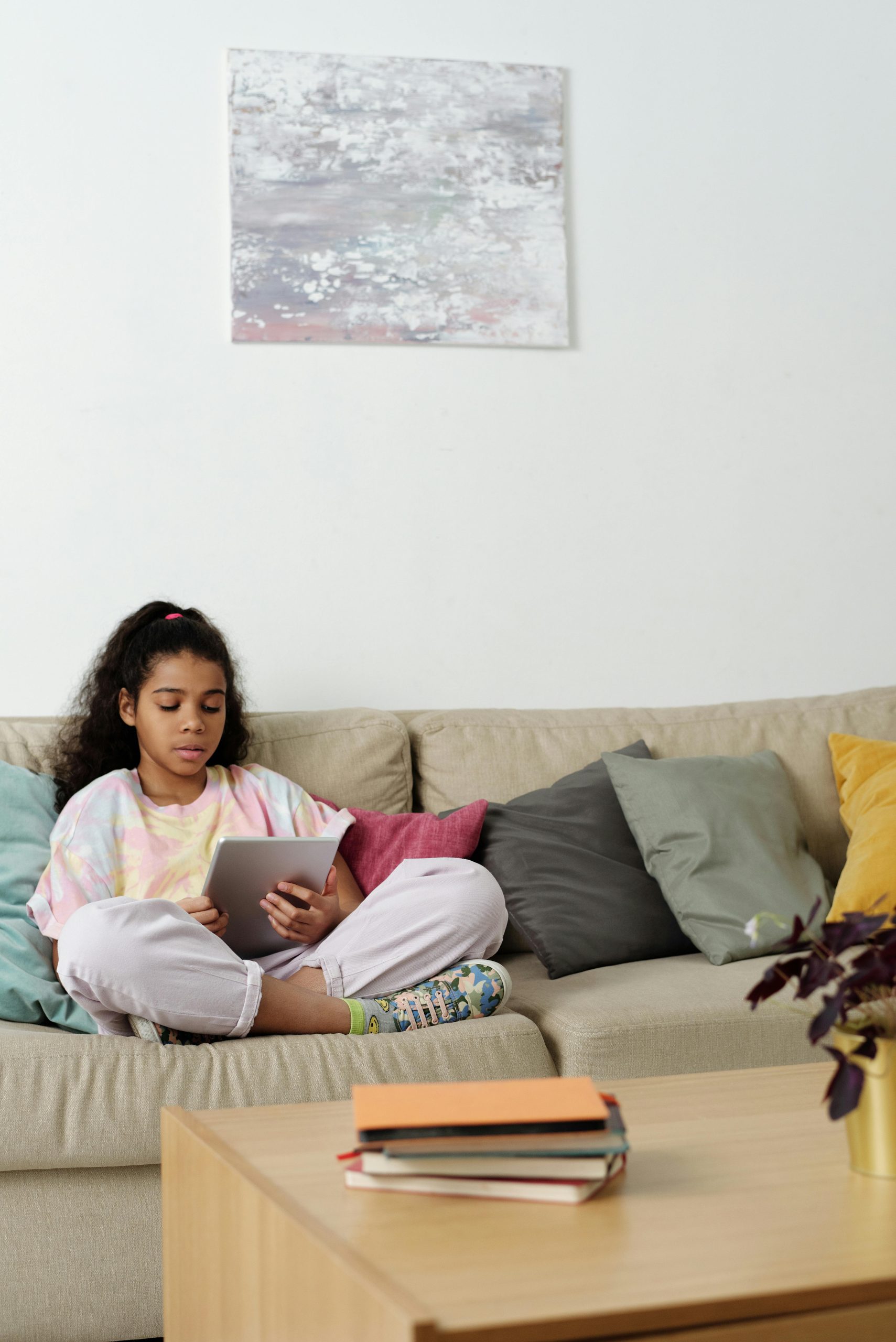

By Dr Georgia Meisel, Child Psychologist at Kidswell Health
Managing screen time can feel like negotiating a peace treaty with a mini diplomat. Whether it’s watching TV, Minecraft, or TikTok dances, screens have a magnetic pull. And when it’s time to switch them off? Cue the tears, the “just five more minutes,” or full-blown meltdowns.
As clinical psychologists, we know the struggles are very real. But the good news? There are evidence-based ways to reduce screen time without turning every transition into a power struggle.
Below, we break down what the research says and give you quick, doable prompts you can start using today.
The research is clear: while screens can be fun and educational, too much use is linked to difficulties with attention, sleep, emotional regulation, and social skills – especially in younger children.
The goal isn’t to create a screen-free home, but a screen-balanced one. And that means helping your child feel safe, prepared, and involved in the process.
As adults, we can struggle to turn off Netflix or stop scrolling on social media – so imagine what it’s like for a developing brain that hasn’t yet learned self-regulation. Screens are designed to hook attention, give instant gratification, and keep you coming back for more. For children, whose brains are still learning how to manage transitions and tolerate frustration, stepping away from screens can feel like a huge emotional ask.
Here’s what’s going on for your child under the surface…
Think of it like this: Asking your child to switch off the screen is like asking them to stop eating a cupcake halfway through.
It’s emotionally easier to click than to collaborate.
What looks like “defiance” is often a lack of skill, not will.
When you understand that your child’s resistance is biological and emotional, not just behavioural, it becomes easier to meet it with empathy, structure, and consistency – not frustration or blame.
Here’s the key mindset shift:
Our job isn’t to control their behaviour, it’s to support their nervous system through the transition.
That means:
The good news? With time and practice, children do get better at transitions – especially when we model patience and help them build those skills gently, not punitively.
1. Set Predictable Routines (Children Crave Structure)
🧠 The Science: Kids feel safer when they know what’s coming next. Consistency reduces anxiety and power struggles.
✅ Quick Prompt:
“In 5 minutes, the iPad goes away so we can play outside. Want to set the timer or should I?”
🎯 Pro Tip: Use visual schedules or timers (e.g. Time Timer app, kitchen timers) to make transitions concrete.
2. Pre-Plan Transitions with Your Child
🧠 The Science: When kids feel in control, they’re less likely to resist. This taps into autonomy and collaboration, which are both big predictors of cooperation.
✅ Quick Prompt:
“After your show, do you want to draw or help me make a snack?”
🎯 Pro Tip: Offer choices after screen time – it helps shift attention from loss (the screen) to gain (a fun alternative).
3. Name and Validate Emotions
🧠 The Science: Validating your child’s feelings helps them self-regulate over time and leads to fewer meltdowns.
✅ Quick Prompt:
“You’re upset because the game ended. That makes sense it’s hard to stop when you’re having fun.”
🎯 Pro Tip: Stay calm and empathic before enforcing the boundary. Then follow through.
4. Build a “Screen Plan” Together
🧠 The Science: Kids are more likely to follow rules they helped create. Collaborative problem-solving boosts motivation and reduces rebellion.
✅ Quick Prompt:
“Let’s make a plan together for screen time. What feels fair for weekdays and weekends?”
🎯 Pro Tip: Use a whiteboard or draw up a “family tech agreement” with checkboxes and rewards for sticking to the plan.
5. Use Positive Reinforcement, Not Punishment
🧠 The Science: Rewarding desired behaviours works better (and faster) than punishing unwanted ones.
✅ Quick Prompt:
“You turned off the tablet when the timer went off – well done, I’m so proud of you!”
🎯 Pro Tip: Start with small, frequent praise and build toward longer screen-free stretches with meaningful rewards (like a family activity).
6. Model Balanced Tech Use
🧠 The Science: Children learn most from what we do, not just what we say. When you model breaks, mindfulness, and play, they follow.
✅ Quick Prompt (for yourself!):
“I’m putting my phone down now so we can build together. Want to help me start?”
🎯 Pro Tip: Narrate your own tech limits – “I’m turning off my laptop now because I’ve been on it a lot today.”
| Strategy | Quick Prompt |
| 🕰 Predictable routines | “5 more minutes, then outside play.” |
| 👩👧 Collaborative choices | “After this, draw or help me cook?” |
| ❤️ Validate emotions | “It’s hard to stop something fun.” |
| 🧠 Make a plan together | “Let’s agree on fair screen times.” |
| ⭐ Use rewards | “Sticker for turning it off calmly!” |
| 📵 Model it yourself | “I’m taking a break from screens too.” |
Reducing screen time doesn’t have to be a battleground. It’s not about being the “no fun” parent, it’s about helping your child develop healthy habits that support their brain, body, and relationships. Start small and be consistent.
Need personalised support with screen struggles, emotional meltdowns, or parenting tools? Our team of child psychologists is here to help. Get in touch today to find out more or to book a consultation.
Learn about hand, foot and mouth disease in children - early signs, treatment, contagious period, and when your child can…
Learn about RSV symptoms, causes, and treatment. Understand how to spot signs early, protect your baby and when to seek…
When a child is finding emotions, behaviour, learning or relationships difficult, parents often come across many different professional titles and…
By Debra Silver, Paediatric Physiotherapist at Kidswell Health Watching your baby reach new milestones is one of the most exciting…
Learn about positional talipes in newborns and babies: causes, treatment, recovery time, and how physiotherapy at Kidswell Health can help.
Dr Mitsu Shah explains common side effects of baby vaccinations.